
DOCENT INSIDER
The Whitney Biennale
11/03/2024
Docent is delighted to offer you a curated guide to the standout features of the Whitney Biennale, along with an exclusive collection of featured artists.
WHITNEY BIENNIAL 2024
99 Gansevoort Street New York, NY
March 20- August 11, 2024.
Wednesday to Monday 10:30 am–6 pm
WHITNEY BIENNIAL 2024
99 Gansevoort Street New York, NY
March 20- August 11, 2024.
Wednesday to Monday 10:30 am–6 pm
“Even Better Than the Real Thing”
In the heart of New York City's artistic enclave, the Whitney Museum of American Art once again opens its doors to one of the most anticipated events in the contemporary art world – the Whitney Biennial. Renowned for its ability to capture the essence of American artistry at a particular moment in time, the Biennial serves as a mirror reflecting the multifaceted narratives, perspectives, and concerns of our society.
Titled, "Even Better Than the Real Thing", this 81st edition of the Whitney Biennial features seventy-one artists and two collectives grappling with many of today’s most pressing issues.
In a statement, Scott Rothkopf, the director of the museum, told that "The Biennial is an engine that powers the Whitney forward, by introducing new artists and ideas to our community and beyond."
Titled, "Even Better Than the Real Thing", this 81st edition of the Whitney Biennial features seventy-one artists and two collectives grappling with many of today’s most pressing issues.
In a statement, Scott Rothkopf, the director of the museum, told that "The Biennial is an engine that powers the Whitney forward, by introducing new artists and ideas to our community and beyond."
Probe Turbulent Time
The exhibition’s subtitle, Even Better Than the Real Thing, acknowledges that Artificial Intelligence (AI) is complicating our understanding of what is real, and rhetoric around gender and authenticity is being used politically and legally to perpetuate transphobia and restrict bodily autonomy. These developments are part of a long history of deeming people of marginalized race, gender, and ability as subhuman—less than real. In making this exhibition, we committed to amplifying the voices of artists who are confronting these legacies, and to providing a space where difficult ideas can be engaged and considered.
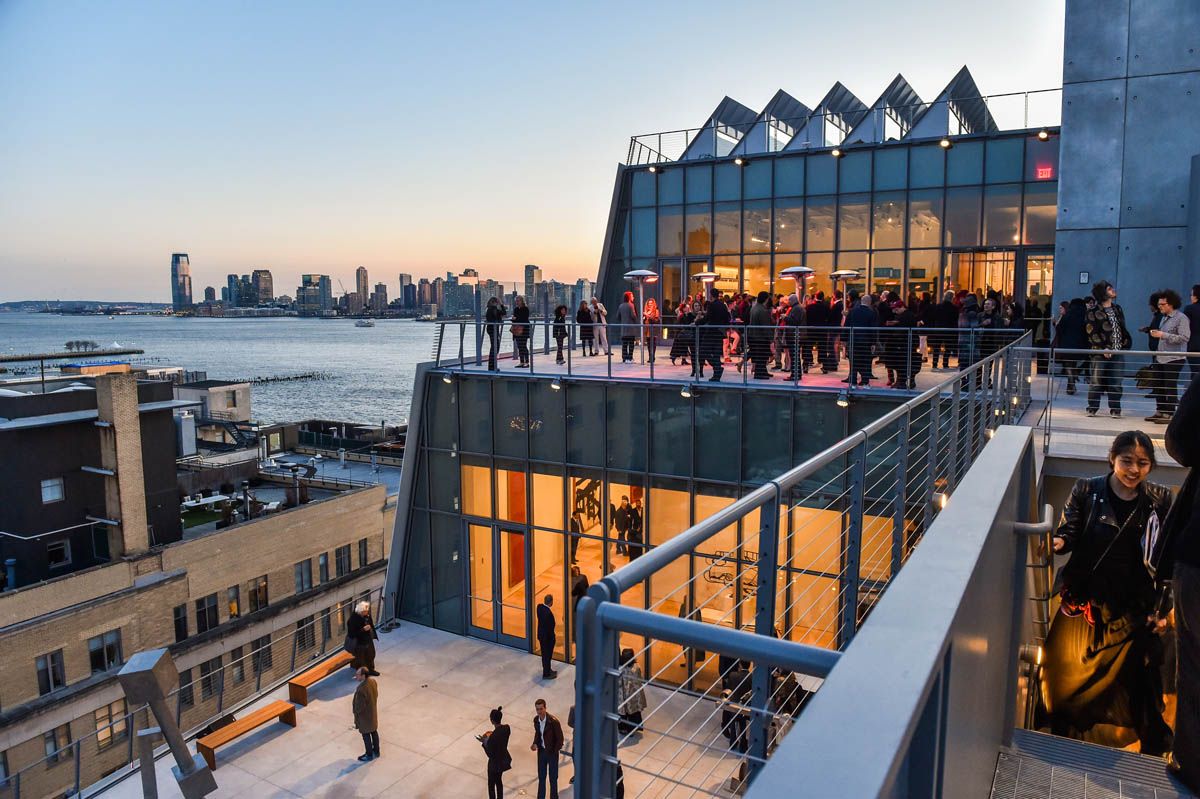
This Biennial is a gathering of artists who explore the permeability of the relationships between mind and body, the fluidity of identity, and the growing precariousness of the natural and constructed worlds around us. Whether through subversive humor, expressive abstraction, or non-Western forms of cosmological thinking, to name but a few of their methods, these artists demonstrate that there are pathways to be found, strategies of coping and healing to be discovered, and ways to come together even in a fractured time.
An ode to diversity
The 81st edition showcases a notable presence of emerging artists, with multidisciplinary artist Ser Serpas, born in 1995, being the youngest among them. Out of the 42 visual artists, 26 were born after the 1980s, including sculptors Jes Fan and Eddie Rodolfo Aparicio.
Additionally, the roster boasts a diverse representation of Indigenous artists, such as sculptor Rose B. Simpson, known for her recent solo exhibition at the Whitney, and New Mexico–based artist Cannupa Hanska Luger.
In the biennial's film and performance program, featuring 29 artists, there is also a significant inclusion of Indigenous participants. The program is curated by asinnajaq, Korakrit Arunanondchai, Zakary Drucker, and Greg de Cuir, Jr., with Taja Cheek (L’Rain) contributing to the performance segment. Despite a focus on artists from New York and Los Angeles, 16 out of the 24 filmmakers hail from outside the United States.
Additionally, the roster boasts a diverse representation of Indigenous artists, such as sculptor Rose B. Simpson, known for her recent solo exhibition at the Whitney, and New Mexico–based artist Cannupa Hanska Luger.
In the biennial's film and performance program, featuring 29 artists, there is also a significant inclusion of Indigenous participants. The program is curated by asinnajaq, Korakrit Arunanondchai, Zakary Drucker, and Greg de Cuir, Jr., with Taja Cheek (L’Rain) contributing to the performance segment. Despite a focus on artists from New York and Los Angeles, 16 out of the 24 filmmakers hail from outside the United States.
P. Staff
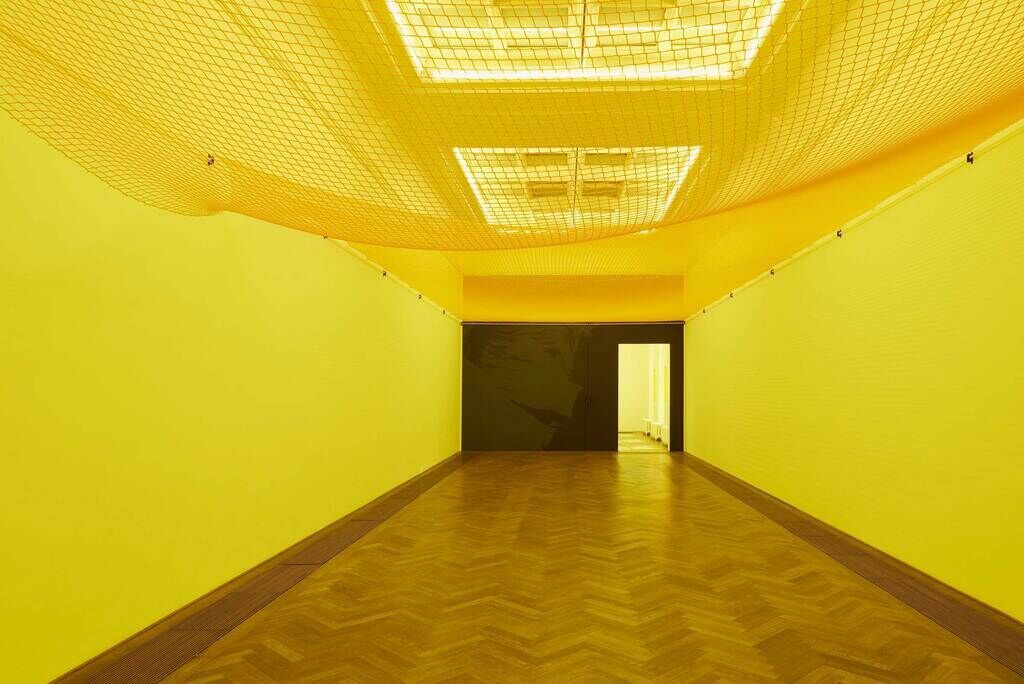
Early in their career as an artist, P. Staff worked as a choreographer. A sense of live encounter remains important in the work on view, as does the idea of experiencing a work of art with the whole body. Their installation’s title, Afferent Nerves, refers to the nerve fibers that channel sensory information from the outside world into the brain, bringing touch, temperature, and pain to the central nervous system— an idea that reimagines the gallery as a kind of body, permeated here by a sense of danger.
Staff bathes the installation in an acidic yellow light. A live electrical net hangs above the gallery, out of reach but audibly buzzing, suggesting the possibility of a physical shock. A photographic self- portrait of the artist on the far wall shows their hands covering their face in a gesture suggestive of suffering or retreat.
Staff bathes the installation in an acidic yellow light. A live electrical net hangs above the gallery, out of reach but audibly buzzing, suggesting the possibility of a physical shock. A photographic self- portrait of the artist on the far wall shows their hands covering their face in a gesture suggestive of suffering or retreat.
Dala Nasser
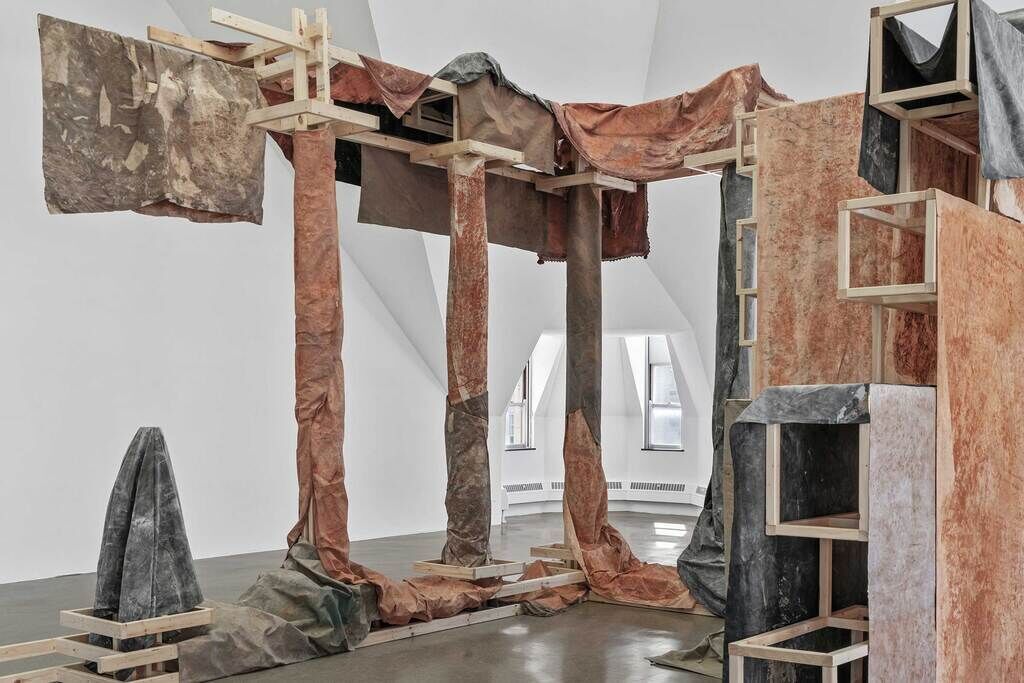
In Adonis River, Dala Nasser creates a space of reflection that intermingles history and myth, past and present, mourning and the potential for collective mourning. Nasser has composed the site-specific sculpture as a row of columns, draped with a form of painting. She made charcoal rubbings of rocks by the Adonis Cave and Temple on bedsheets, which she then dyed with iron-rich clay from the banks of the Abraham River (formerly the Adonis River) on Mount Lebanon, north of Beirut.
Nasser explores the ways that the Temple of Adonis has become important as a unifying site in Lebanon—a region with a long history of violence and conflict that continues to this day—and as a source for mythology and mourning rituals that forge a living continuity between past and present.
Nasser explores the ways that the Temple of Adonis has become important as a unifying site in Lebanon—a region with a long history of violence and conflict that continues to this day—and as a source for mythology and mourning rituals that forge a living continuity between past and present.
Tourmaline
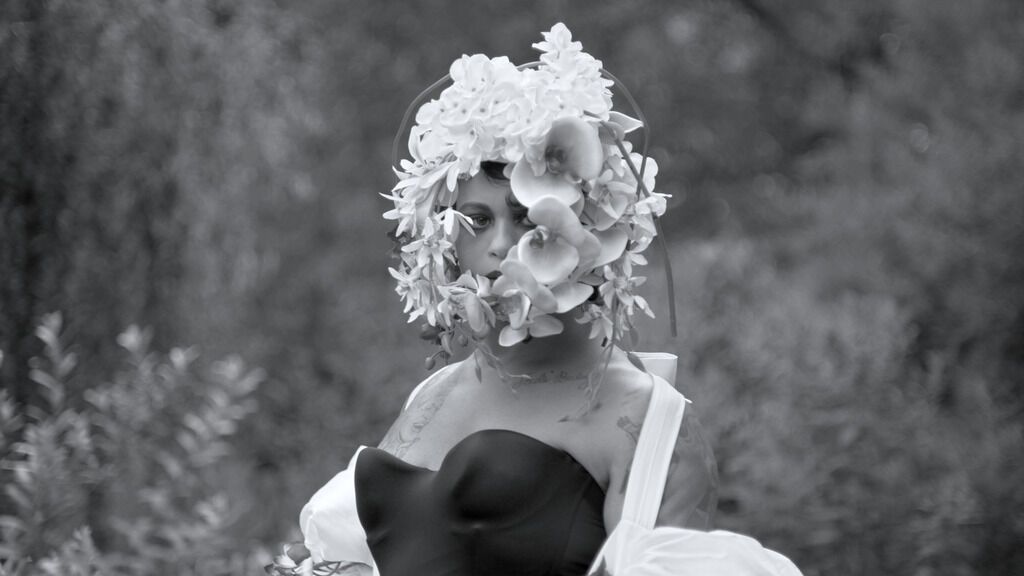
In Pollinator, Tourmaline proposes “that the truth of life is its ongoingness, its essence unchanged and unconstrained by space, time, or physical form.” In some scenes of the film, the artist walks through a garden in a floral headdress—seemingly equal parts generator and receiver of creative forces—and floats on a zero-gravity flight. Additional footage features the funeral procession and community celebration of Black trans activist and performance artist Marsha P. Johnson (1945–1992). Johnson often adorned herself with flowers, acting, as Tourmaline has put it, “as a pollinator for more expansive renderings of self and beauty in the world.” Appearing throughout the film and at its close, Tourmaline’s late father, George Gossett, sings “The Cisco Kid” (1972) by War to the artist as she stands behind the camera.
Lotus L. Kang
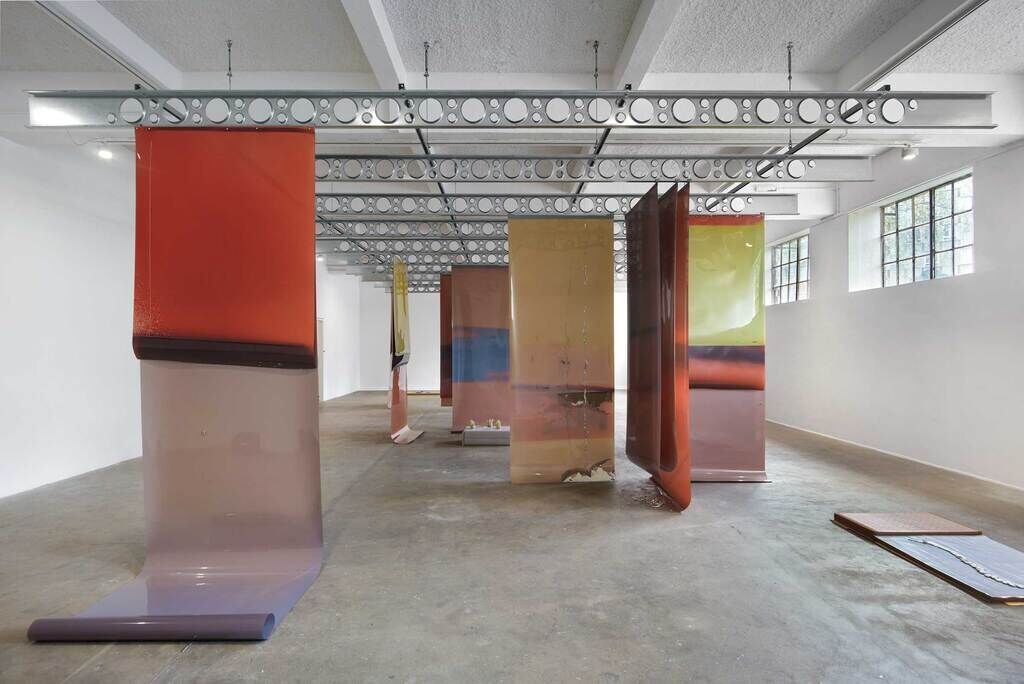
Lotus L. Kang’s, In Cascades, welcomes viewers into a world situated between inside and outside, life and regeneration, and emptiness and fullness, suggesting a constant state of transformation. It consists of photographic films unfurling from steel joists suspended from the ceiling and a series of floor sculptures made of tatami mats and cast-aluminum objects. The materials are industrial, portable, modular, and open to change. Kang exposes the film—an inherently vulnerable material—to varying conditions of light in multiple locations. She refers to this process as “tanning,” likening the film surface to skin and bringing the material back to ideas of the body, particularly its permeable relationship with environments. By doing this, the artist hints at an unfixed understanding of one’s body, diasporic identity, and the processes of memory.
Ser Serpas
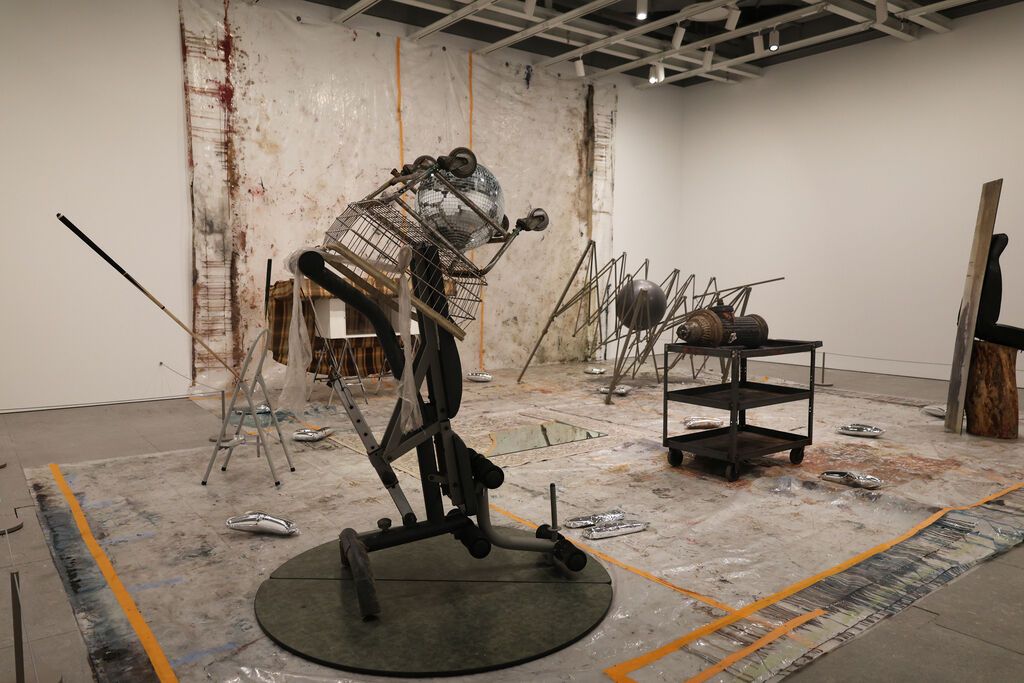
Describing sculptures like those included in this exhibition, Ser Serpas has said that “the act of making is a choreographed performance, of which the assemblage is the aftermath.” The performance begins in a city—in this case, New York, and specifically Brooklyn—with the artist collecting discarded objects that speak to her through their color, the ways they have become worn or torn, and their structural openness to being combined. Then she works with the objects’ orifices, odd junctures, and gravity to combine them into provisional sculptures. This process yields a feeling of potential energy just at the moment before an object’s collapse. The resulting sculptures become a kind of dual portrait: first of the city as seen through its cycles of consumption and decay, and then of the artist herself through the expressive choices she has made.